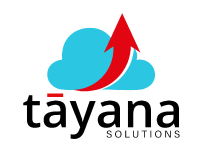Unlock Efficient Project Billing: A Simple Switch with Powerful Results
This page delves into a real-world business challenge and the straightforward solution found within Acumatica’s ERP system to streamline project billing from quantity-based to amount-based, unlocking significant efficiency gains.
(a) Challenges: The Frustration of Inefficient Project Billing
Many businesses, particularly those managing complex projects and billing, often find their existing processes to be clunky and inefficient, which can hinder productivity and create unnecessary administrative overhead. One such challenge arises when the needs of a project evolve, specifically concerning how clients are billed.
Consider a business that initially bills based on the quantity of work performed or materials used. While this system works for some projects, it can become cumbersome, especially for fixed bid projects where an upfront price is agreed upon for the entire undertaking. The specific challenge highlighted was a client needing to transition their billing approach from a quantity-based system to an amount-based system.
While this change might seem simple on the surface, altering the billing base of a project within Acumatica’s ERP system is not as straightforward as just flipping a switch. A significant pain point with a quantity-based system emerges when clients want to add deliverables to a project. In such scenarios, businesses would have to go back and recalculate all the quantities for every task, a process described as potentially being a “nightmare”. This lack of flexibility and the burden of constant recalculations can significantly slow down operations and strain client relationships.
(b) Solution and Benefits: Simplifying Billing with Acumatica's Progress Billing Base
The solution to this challenge lies within a specific feature of Acumatica’s ERP system found in the revenue budget tab. This tab is central to the financial planning of a project, determining how revenue is recognized, and costs are allocated, essentially acting as the project’s financial roadmap. Within the revenue budget tab, there’s an option called progress billing base.
This option is specifically designed for fixed bid projects, as opposed to those billed on a time and materials basis. The progress billing base allows users to set whether they want to bill based on quantities or amounts. In the case study discussed, the key was switching this setting from quantity to amount.
While this might seem like a simple adjustment, it yields significant benefits:
- Simplified Adjustments: When a client wants to add a deliverable to the project, with an amount-based system, you can simply adjust the overall budget and invoice for the new amount. This eliminates the need for complex and time-consuming recalculations of individual quantities.
- Increased Flexibility: The amount-based system provides the client with a lot more flexibility as the project evolves, making it easier to accommodate changes without significant administrative overhead.
- Time and Hassle Savings: The progress billing base option is a powerful feature that can save a lot of time and hassle for businesses that understand how to utilize it effectively.
For businesses facing similar challenges with their project billing processes, seeking expert assistance can be highly beneficial. Tayana Solutions, a leading Acumatica cloud ERP partner with a strong reputation, has consultants like Aishwarya who possess extensive experience in solving complex ERP challenges. They can help optimize your business processes by leveraging the full capabilities of Acumatica, including features like the progress billing base. Tayana Solutions offers comprehensive support for various Acumatica needs, including configurations, reports, business events, security, and even Power BI integrations, making them a valuable resource for Acumatica users.
In conclusion, understanding and utilizing features like Acumatica’s progress billing base can be instrumental in moving away from clunky, inefficient quantity-based billing systems to a more streamlined and flexible amount-based approach, ultimately enhancing efficiency and client satisfaction.
